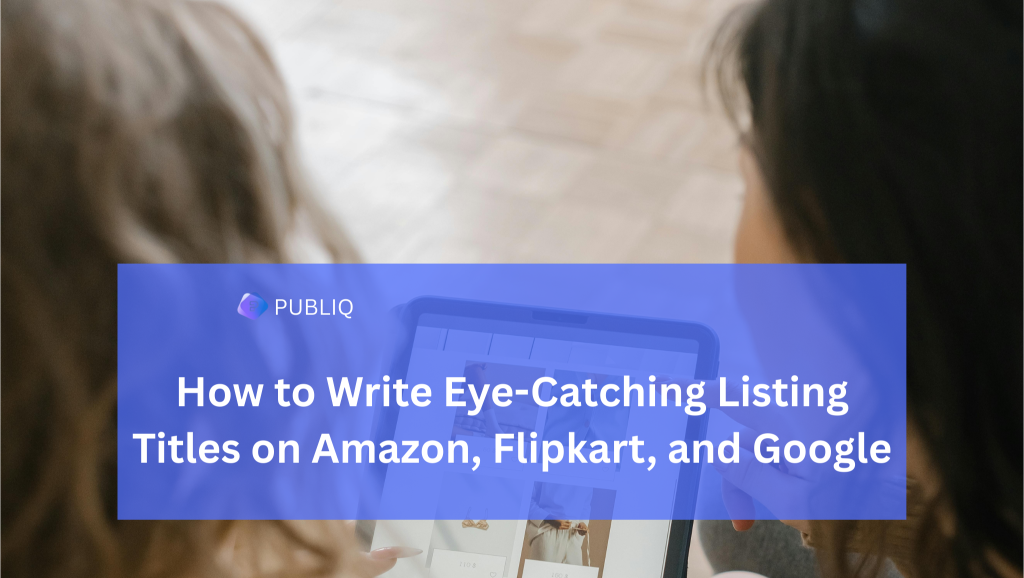How to Write Eye-Catching Listing Titles on Amazon, Flipkart, and Google

First impressions aren’t just visual—they’re textual. In the competitive world of ecommerce, your product image might grab attention, but it’s your listing title that convinces someone to click. Your title plays a major role in visibility, click-through rate, and ultimately—sales whether you’re listing on Amazon, Flipkart, or wanting to appear in a Google Shopping search. Most sellers underestimate the powerful and crisp title. But done right, it makes all the difference. Here’s how to make your listing titles not just readable, but stand out.
Know What Each Platform Prioritizes
Amazon, Flipkart, and Google all have different criteria when it comes to how titles are ranked and displayed:
Amazon prefers keyword-rich but readable titles, often allowing up to 200 Characters only. Flipkart requires brand-focused titles, especially in fashion and electronics. Google Shopping places higher emphasis on exact match terms at the beginning of a shopper’s search. Customize your titles to each platform’s requirements and rules rather than using the same one everywhere.
Start with the Most Searchable Keywords
The beginning of your title matters most for SEO. Start with the bulkiest, most relevant keyword (usually the product type). For example: Instead of: XYZ – Cotton Blend Shirt for Men, Slim Fit, Blue, Size L
Try: Men’s Slim Fit Cotton Blend Shirt – Blue, Size L | XYZ
This small tweak pushes important keywords up front, where they will most likely have a better SEO impact.
Avoid Overdoing—Be Short and Crisp
Many sellers think stuffing every possible keyword will help with more visibility. In reality, it confuses both the algorithm and the customer. Clarity accelerates conversions. Use your top 2–3 keywords naturally, and avoid repeating the same word multiple times. If it feels robotic, it probably is.
Assign a category-Specific Rule for Each Platform
Each product category has different requirements. Create a repeatable template so your titles feel clean and can save time.
Examples:
Apparel: Gender + Fit/Type + Material + Color + Size + Brand
Electronics: Brand + Model + Specs (e.g. RAM, Storage) + Feature + Color
Once you define this structure, it becomes easy to manage your catalogue without losing quality and time.
Keep it Human-Friendly for Higher Clicks
Even if your title ranks, a cluttered and unclear one will not be clicked and hence affect your sales. Write for real shoppers. Would you click that title? Keep it crisp enough to skim through with separators (like hyphens, etc.), avoid ALL CAPITAL words, and make sure it’s natural.
Test, Analyze, Repeat
Platforms like Amazon allow A/B testing (with tools like Manage Your Experiments). Use this to test versions of your title and measure which drives better click-through and sales. Try looking at it from the shopper’s point of view. Every product or category will have its own specific requirements. Periodic optimizing is key in staying ahead of your competitors.
Conclusion
Your title is the most impactful to both a human and the machine.Whether you’re writing for Amazon’s A9 algorithm, Flipkart’s filters, or Google’s search browsers, one rule always needs to be kept in mind- ”short and sweet” is impactful. Publiq Studio helps you create SEO-smart titles tailored to each platform using AI + human-like tone. Check it out to crack the code for smart listing titles.
